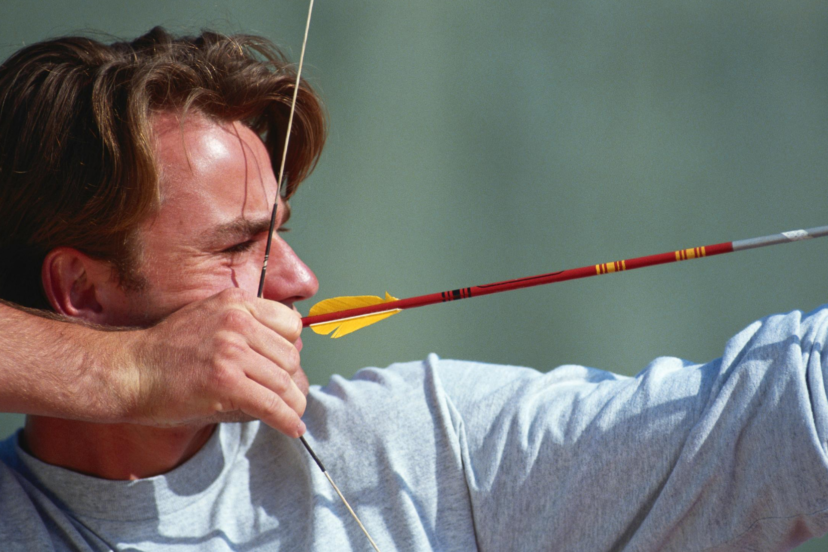If you are asking yourself, how does a crossbow work?, then you are probably intrigued by…
What is my Draw Length and Draw Weight?

Draw length and draw weight are 2 terms that beginners are first faced with and might have some trouble figuring out. But once you are into archery will all become natural and you will forget about not understanding these 2 terms.
Draw length and weight are characteristics of the bow but also characteristics about your body. Read on to come up with yours as a beginner, even if you don’t have a bow yet.
Draw Length
Draw length is the distance between your bow gripping hand and the tip of the fingers that are pulling the string backward at your full draw (pull back). This distance should be matched up to your bow’s draw length to get the most efficiency of the bows design. Of course the string can be drawn back a little more and a little less than the “ideal” draw length of the bow, and it will be ok. The more you draw it back the more strength you are adding to the shot, so the arrow will be faster. However always make sure your arrow is longer than the draw length at least by 1 inch or else it will fall off the bow and you will be seriously injured. If you are curious, just search for arrow in hand. Get ready for a bit of gore. I had to warn you.
Draw length Calculation
For beginners and if you don’t have a bow available to measure your actual true draw length then you can quickly calculate.
- Measure your wingspan, that is the distance between your middle fingers when your arms are outstretched parallel to the ground. This will be W.
- Calculate W/2.5 Divide the Wingspan by 2.5.
Draw Weight
Draw weight should start much lower for beginners for 2 reasons.
- Your body needs to gain strength for this specific movement that is drawing a bow, which is an unusual movement.
- The lower your initial draw weight the easier it will be to practice losing an arrow over and over again so it will give you the opportunity to increase your skill level, without straining or hurting your body.
After practicing the fundamentals and gaining skill, then you can start increasing the draw weight.
Draw Weight Selection for Beginners
I have found several charts that generally suggests a draw weight for beginners depending on their weight and gender or their age. I have combined the most relevant tables into one of my own. It is lower than most other suggestions because I agree with some coaches that being over-bowed ( your bow’s draw weight is too high) is always going to block you from getting better and learning the fundamentals.
If you are a beginner always go for the lower drawn weight in the range you fall in. Only if you know that you have a stronger than average upper body would I suggest starting at the higher end.
| Gender and or Age | Size of frame | Your Weight | Suggested Draw Weight |
| Young Children | small | 50-75 lbs | 10-12 lbs |
| Children Medium-sized | medium | 75-100 lbs | 10-14 lbs |
| Teens | all | 100-135 lbs | 12-16 lbs |
| Young Adults | all | 100-150lbs | 16-20 lbs |
| Women | small | 100-135 lbs | 16-20 lbs |
| Women | medium | 135-165 lbs | 16-24 lbs |
| Men | small | 120-150 lbs | 18-24 lbs |
| Men | medium | 150-180 lbs | 20-26 lbs |
| Women | large | 165+ lbs | 16-26 lbs |
| Men | large | 180+ lbs | 22-28 lbs |
Wrap up
It is best when your draw length and weight match you bow. With a lower draw weight you will be able to practice longer and with less strain on your muscles, etc. No need to show of with a higher draw weight. You don’t want to be overbowed.



